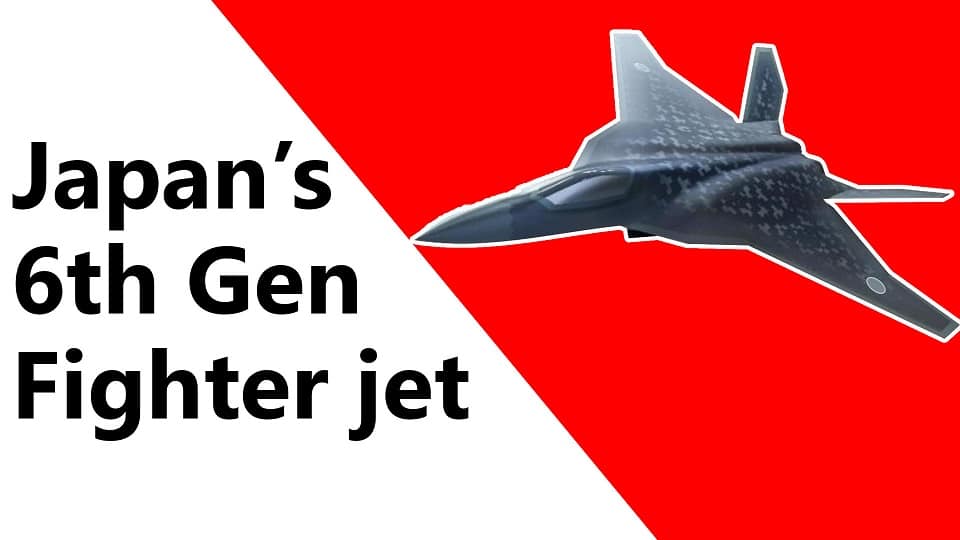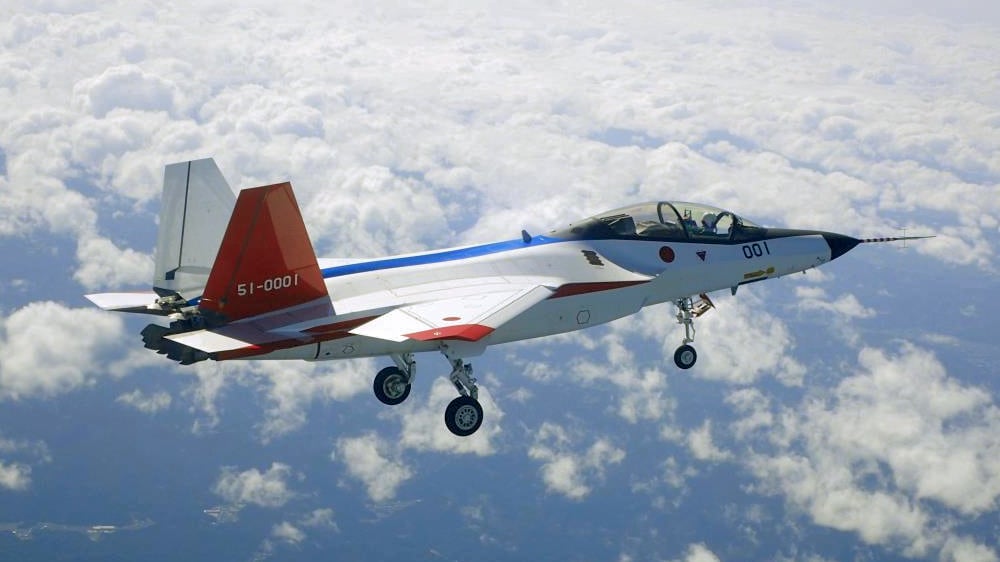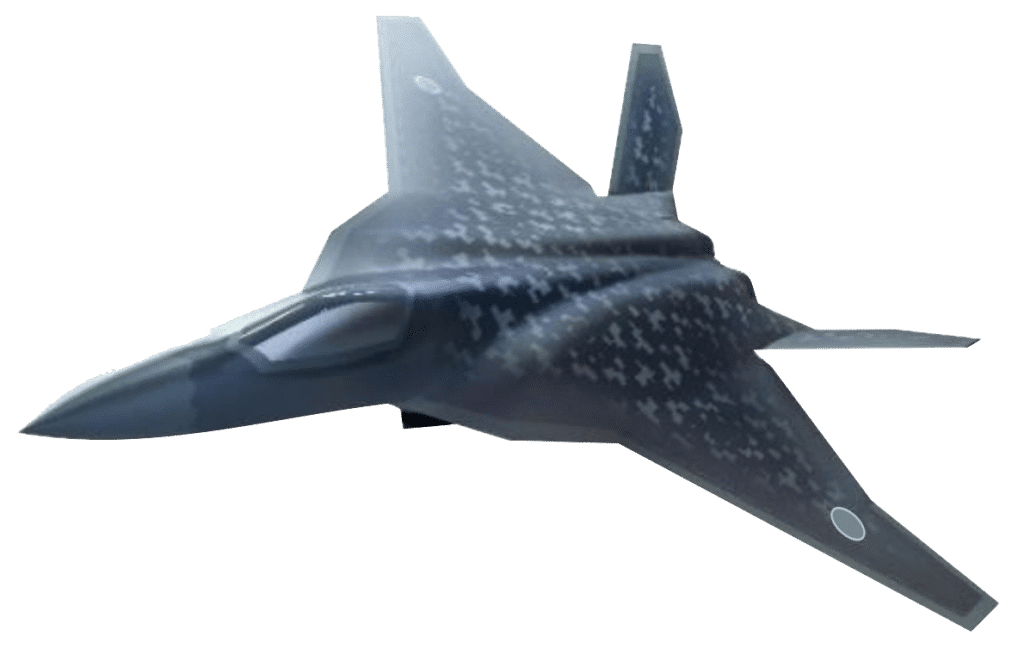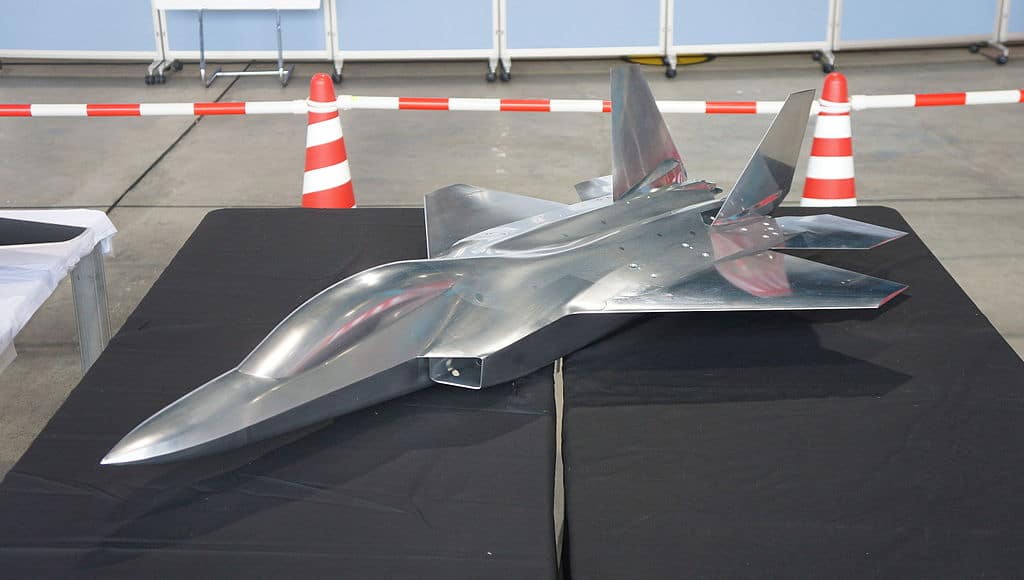Aviation
Meet Japan’s 6th Gen Fighter jet and its mind blowing features
When the United States rejected the sale of F-22 aircraft, Japan began work on a new 6th-generation fighter jet.

Welcome back to jetline marvel for another thrilling episode. As we all know Building Fighter jets is a difficult task for any aerospace producer. since it necessitates a great deal of material and technological expertise. But what if Japan, the world’s leading innovator in technological fields, creates its own fighter jet and that too a sixth-generation?
When the United States rejected the sale of F-22 aircraft, Japan began work on a new 6th-generation fighter jet.
We shall examine some of the fascinating details regarding this aircraft in this video..
1. The Japan FX scheme is pushed after the US rejected the F 22 for Japan.
The program began in 2009, but because the U.S. Congress forbade the export of the aircraft in order to protect its technological secrets, including its extensive use of stealth, Japan was forced to develop its own modern fighter that would be outfitted with stealth features and other cutting-edge systems.
Aircraft comparison Brazil’s KC-390 vs Japan’s Kawasaki C-2(Opens in a new browser tab)
The Mitsubishi Heavy Industries-built X2 is the first experimental Stealth technology demonstration for the sixth generation of aircraft. The prototypes and stealth technology are learned using this aircraft.
On April 22, 2016, the X-2 completed its first flight, taking off from Nagoya Airfield and landing at Gifu Air Field of the JASDF.
India’s $3 Billion MQ-9 Reaper Drones Deal With US In Advanced Stage(Opens in a new browser tab)
2. It has Fly-by optics feature and 3D vectoring thrust control.
Three paddles are located on each engine nozzle of this aircraft, which has 3D thrust vectoring identical to the system used on the Rockwell X31. That enables fast maneuverability for aircraft and supports multiple flight trajectories.
Additionally, the data is processed 100 times faster than with wires because of the demonstration of fly-by optics, a feature exclusive to this aircraft. It has benefited from immunity to electromagnetic interference.
Additionally, this aircraft has the ability to self-repair its flight controls, allowing it to autonomously detect faults or damage to its flight control surface. maintain, calibrate, and perform controlled flying.
3. The electric actuator is taking the place of the hydraulic one.
The flaps and other oscillate devices of fighter jets are typically operated by hydraulic actuators, however, Japan is utilizing electric actuators for the FX program. The hydraulic actuator takes up more room and places more restrictions on designs, whereas the electric actuator can be fitted to the design. enabling greater freedom in the aircraft’s body design. Body weight reduction and increased aircraft mobility are other benefits. The control, power, and leg/brake systems of the fighter are all equipped with electronic actuators.
4. Adhesive bondings are replacing fasteners.
It is also claimed that a new fighter aircraft level is being developed. The adhesive moulding will be replaced with fewer fasteners on this aircraft. by using adhesive molding to bind composite materials together, fasteners can be eliminated. The “integrated/fasteners structure” technology is the name given to this process. Heat shield technology is positioned around the engines to enable the application of aluminum alloys and carbon fiber reinforced polymer (CFRP) to minimize weight in the vicinity.
5. This aircraft will have the radar of the F35 version.
The F-X uses sensors that are already built into the aircraft to better detect stealth aircraft. The sensors consist of an infrared camera, a passive radio frequency (RF) sensor, and an active electronically scanned array (AESA) radar.
To defend against threats from aircraft, air-to-air missiles, and surface-to-air missiles, the F-X has an RF “self-defense” system. By being informed of the threat and instantaneously and worldwide sabotaging its radio waves, the system accomplishes both ESM and ECM. which sensor is most likely to be found in the wings and tail.
6. Its surface contains several unique coverings.
Most of the 5th gen fighter jets have a special coating on the surface since the FX also special coating. The stealth design will have serpentine air ducts and an internal weapons bay to reduce the amount of radar reflection. It also has a carbon-based material absorber which helps to reduce the detection range from radar threats by about half. It also has the metamaterial also used to reflect radio waves.
7. This engine is more compact but still powerful when compared to the GE F110 engine.
Axial-flow afterburning turbofan with a 6-stage high-pressure compressor and a 3-stage fan, the XF9-1 has dual redundant dual spool construction. The official thrust level for the prototype engine is “11 tonnes” (107 kN) The development of future fighter engines aims at a maximum thrust of 20 tonnes (196 kN)
The XF9 has a high combustion temperature of 1800 °C. It’s notable how little the XF9 is compared to how powerful it is. For instance, the General Electric F110 engine intake on the XF9 is 30% smaller than that on the F-2.
8. It’s claimed that the F-X is larger than the F-22.
The aircraft’s size suggests that the MoD wants it to have a very long range and a huge payload capacity. The Mitsubishi F-2 will be replaced by the next-generation F-3 or F-X, Japan’s first homegrown stealth fighter aircraft. It will be a twin-engine fighter with six internal weapons mountable. As The EuroAsian Times has stated, the fighter jet will complement the smaller F-35 aircraft. F-X, together with Chinese and Russian fighters, might be a generation ahead of those three. By 2035, it is anticipated to be fully functioning.
9. It will be equipped with contemporary armaments.
A microwave weapon will be mounted aboard the F-X to deflect approaching missiles. This aircraft has the ability to control drones and its drone system interfaces with that of the Boeing wingman drone system.
This will be a breakthrough in operating a greater range when compared to deploying drones that can be launched from an aircraft’s weapons bay to reach and target the adversary at a great distance.
10. It is looking for a global partnership to cover research expenditure.
It estimated $48 billion cost of the program. Japan is considering working together with the US and the UK. It may give the UK greater significance than the US for a number of reasons. As of mid-April 2019, several sources claim that the United States was willing to allow Japan access to portions of the F-35’s software in exchange for collaboration on the construction of the F-X fighter. The particular partnership for Japan’s FX program is still to be chosen, though.
A decision has not yet been made about Japan’s interest in helping India develop the AMCA fifth-generation fighter plane.

Aviation
Boeing, Antonov to Collaborate on Defense Projects

– MOU represents Boeing’s commitment to work with Ukrainian industry
– Includes exploring opportunities for collaborating on in-country support of Unmanned Aerial Systems
A Memorandum of Understanding was signed today by Boeing and Antonov Company to investigate potential collaboration on defense-related projects.
“We’re happy to keep collaborating with the Antonov Company to help Ukraine’s economic development and expansion,” stated Ted Colbert, CEO and president of Boeing Defence, Space, & Security.
Airbus and the Antonov An-225: The Best Partnership:Click here
“This agreement demonstrates our ongoing efforts to find more opportunities to work with Ukrainian industry, which was underscored by our signing of the Ukrainian Defence Industry Compact earlier this year.”
The areas of potential collaboration identified in the agreement consist of training, logistical support and overhaul services for tactical Unmanned Aerial Systems utilized by the Ukrainian Armed Forces, which includes the ScanEagle. In addition, the companies will also explore opportunities for Antonov to provide engineering support to Boeing.
The six largest cargo aircraft ever built in the aviation industry:Click here
“A strong, innovative, and efficient defense industry is key to sustainable economic development and national security, and we are extremely excited to collaborate with Boeing,” said Ievhen Gavrylov, CEO of Antonov Company.
This agreement brings a whole new level of opportunity to implement the latest and most effective solutions – in addition to the possibility of future projects with Boeing in the aerospace and defense industry.”
-

 Travel1 week ago
Travel1 week agoAir India to Expand US Operations with Three New Routes After a Decade
-

 Travel2 weeks ago
Travel2 weeks agoWhy We Should Avoid These Stamps in a Passport
-

 Airlines1 month ago
Airlines1 month agoInvestigations Reveal Fake Chinese Titanium in Boeing and Airbus Jets
-

 Tech4 weeks ago
Tech4 weeks agoChina’s CATL Plans 1,800-Mile Electric Plane Launch by 2027
-

 Airport3 days ago
Airport3 days agoTop 10 Largest Airports in the World by Size
-

 Aerospace4 weeks ago
Aerospace4 weeks agoChina’s Fighter Jets Turn Wings into Autonomous Drones
-

 Airlines4 days ago
Airlines4 days agoAir India Rolls Out A350s for Delhi-New York JFK and Newark Routes
-

 Defence3 weeks ago
Defence3 weeks agoBoeing Enhances Chinook with New Engines and Block II Upgrades at $96 Million











